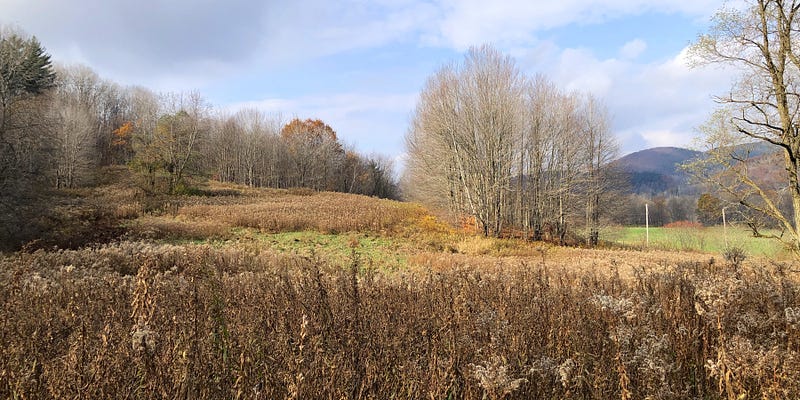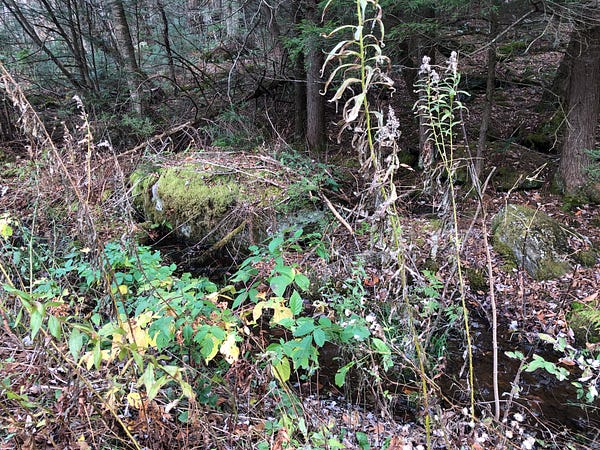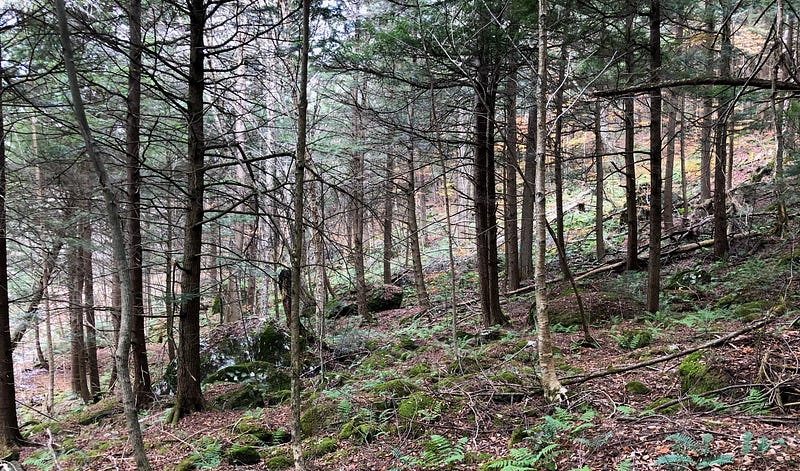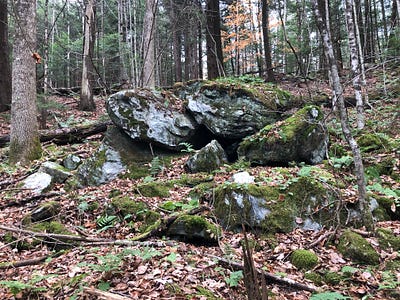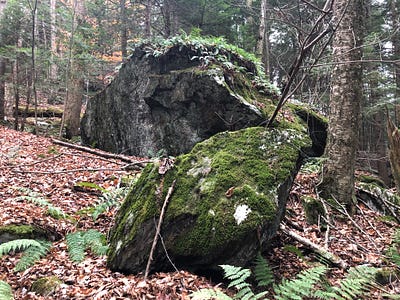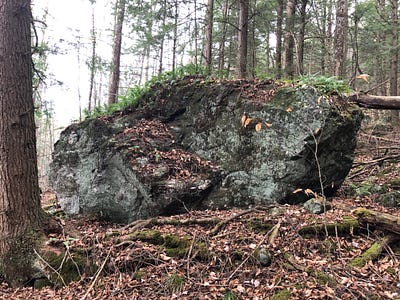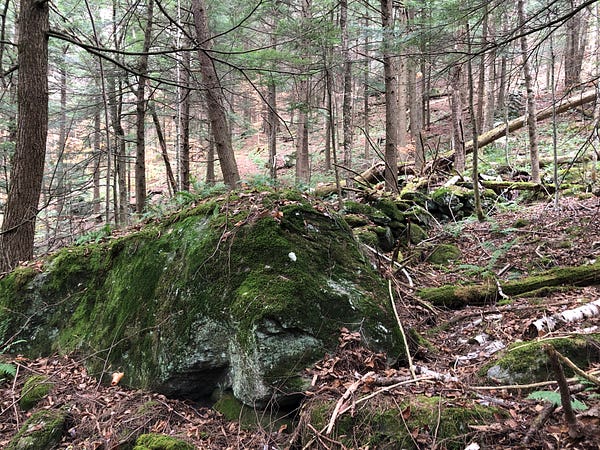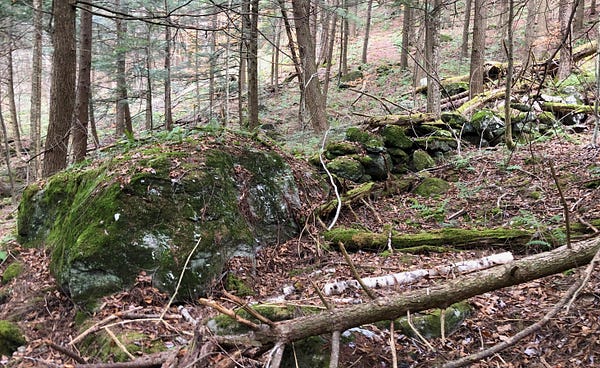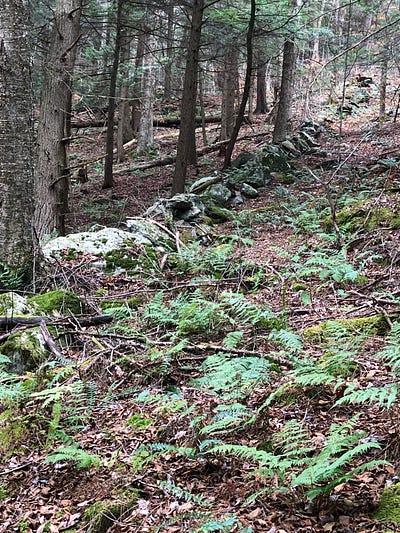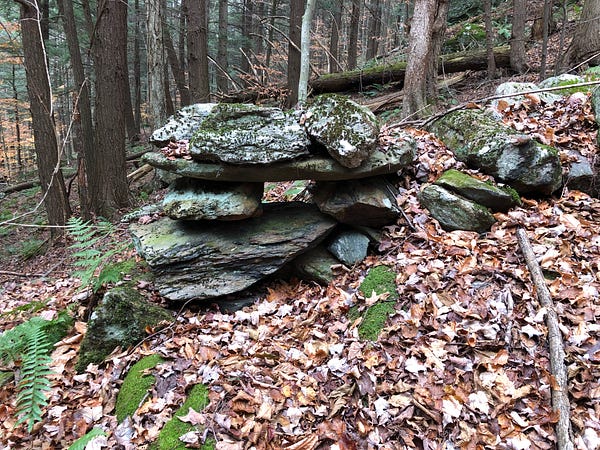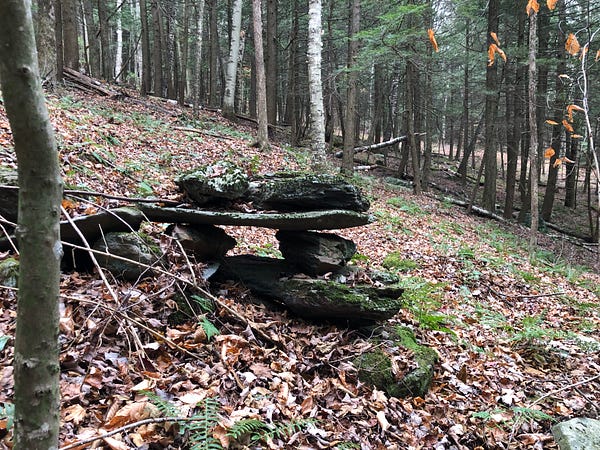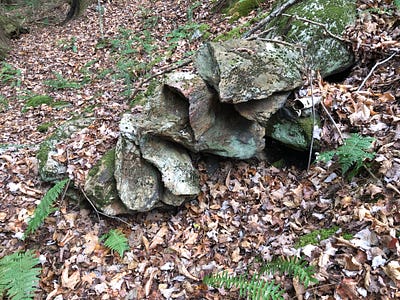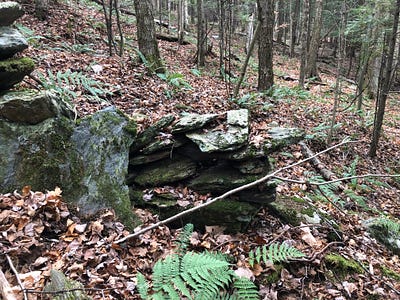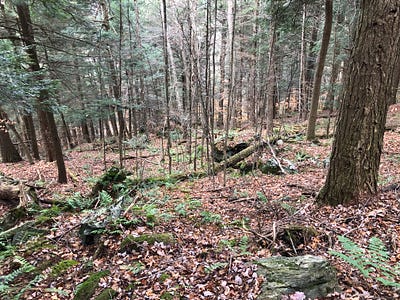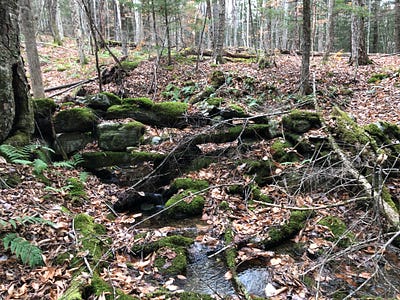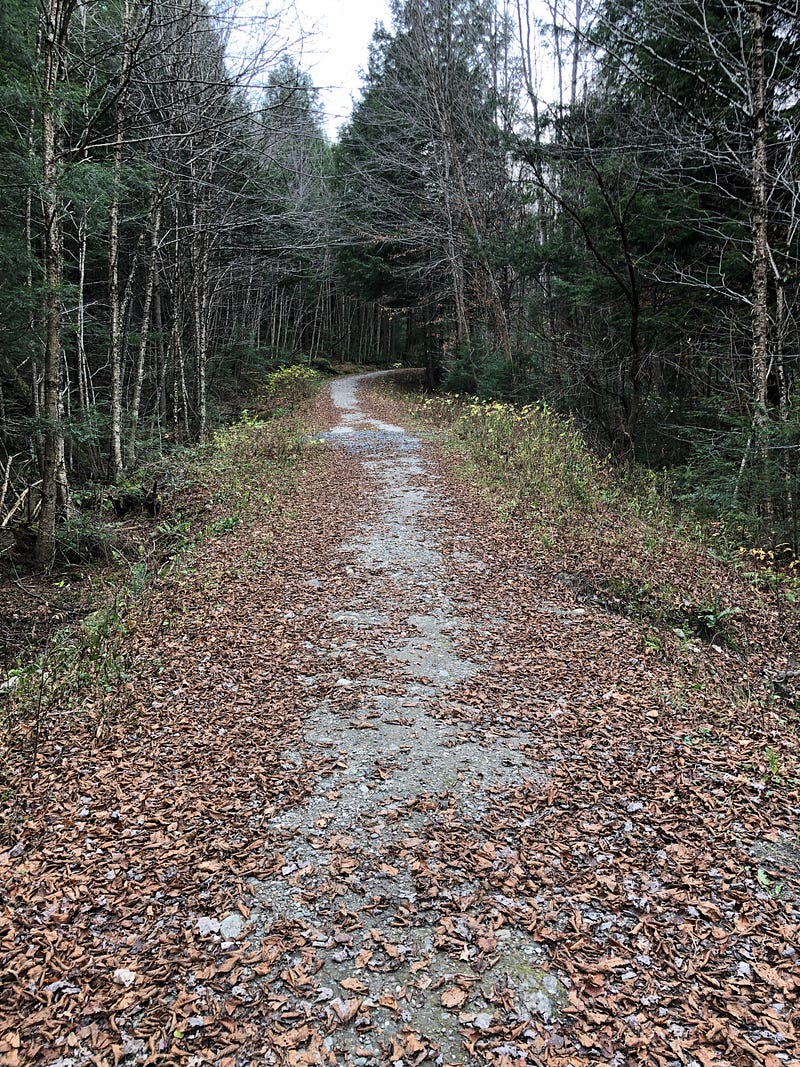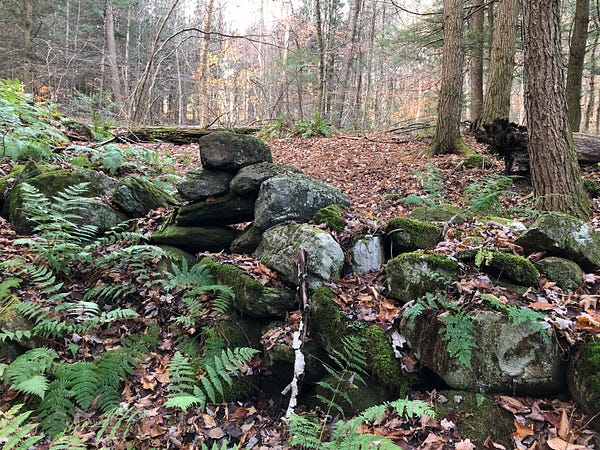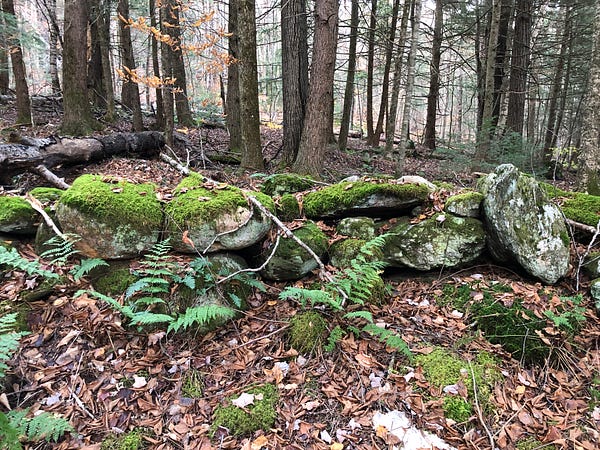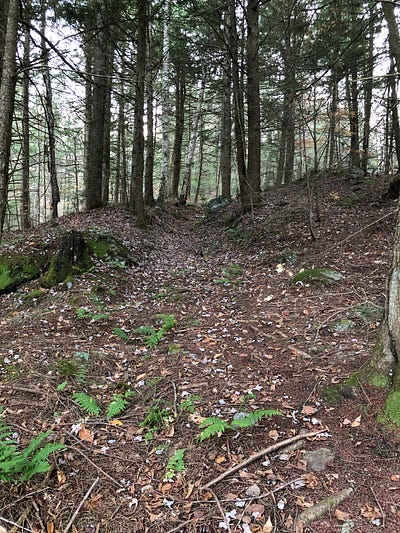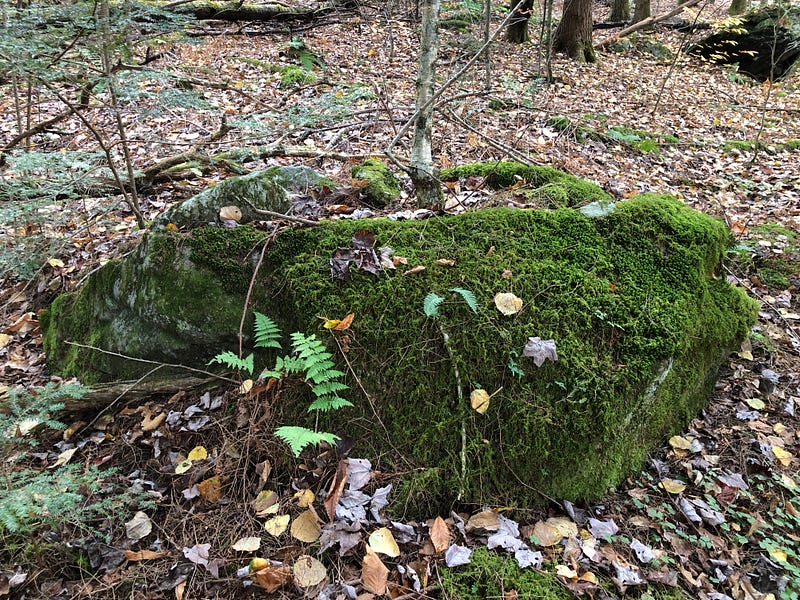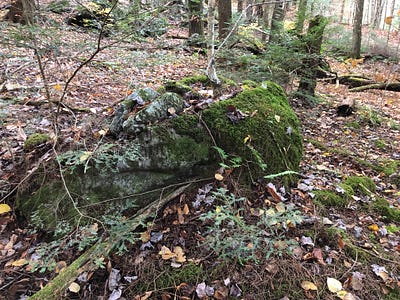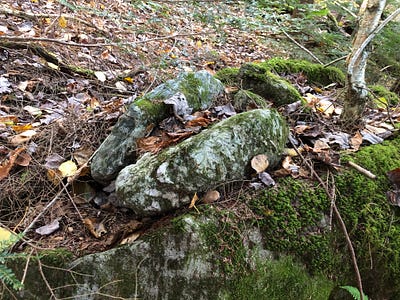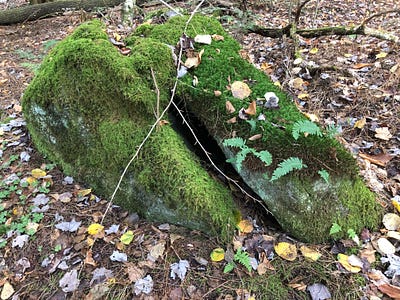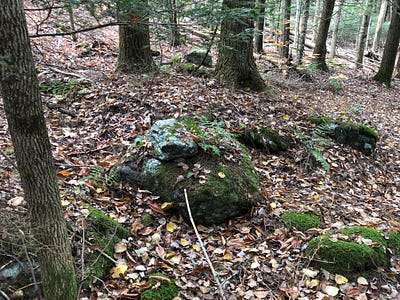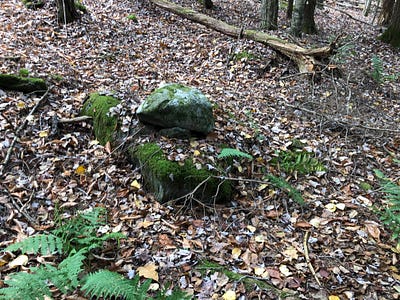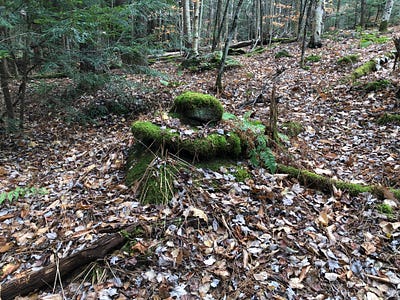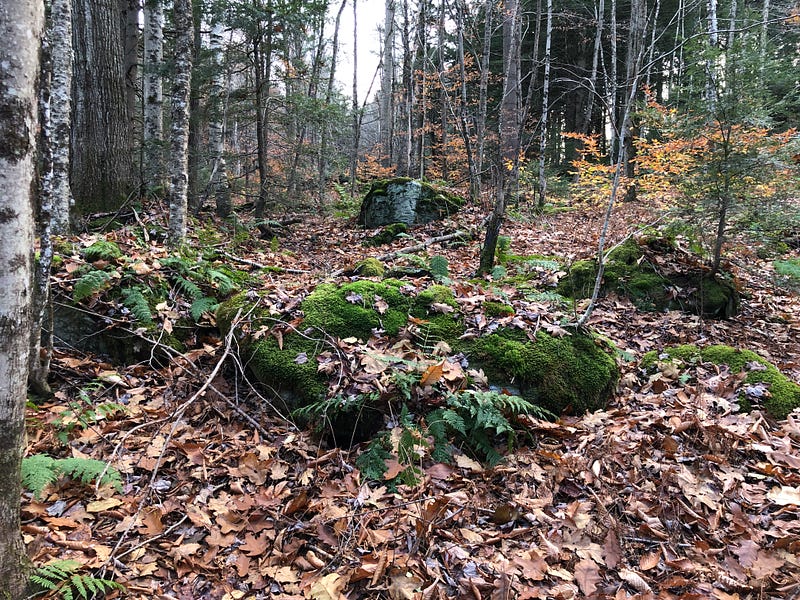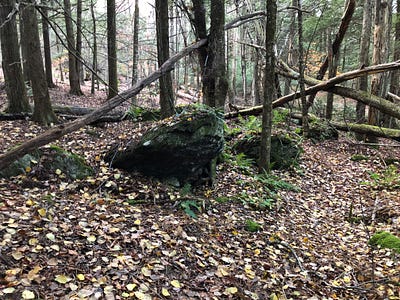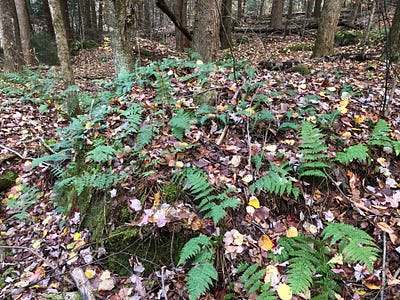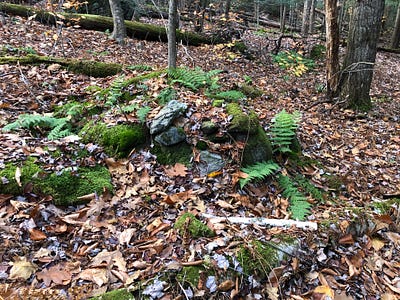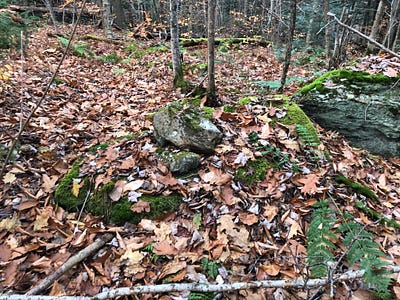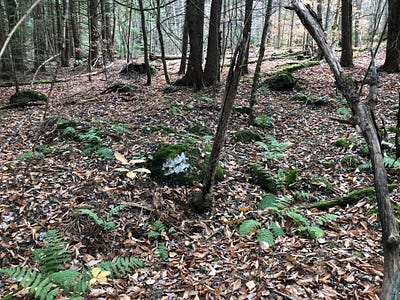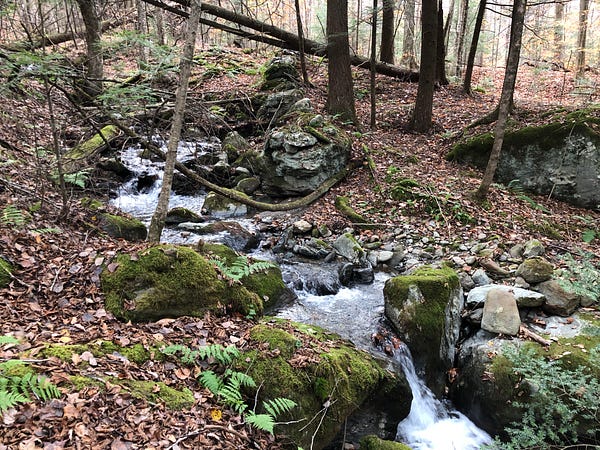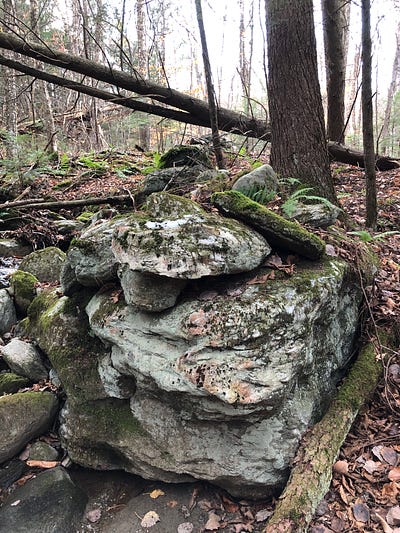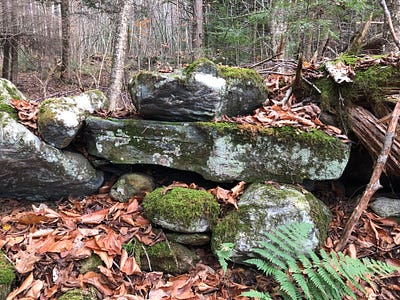Possible Stone Prayers In A Hollow Near Camel’s Hump
A New-To-Me Discovery in the Richmond, Vermont Area
A New-To-Me Discovery in the Richmond, Vermont Area
When you document our ancient stone mysteries in the woods and forests of New England, you notice as the falling leaves of Autumn yield to “stick season” that the stones begin to show up better in footage and photos. Overcast days in late Fall and early Spring are the best for shooting old stonework. The stones really stand out. So, the dreary, grey Vermont weekend just past made for ideal weather for my first visits to a new-to-me stonework site about a half-hour outside of Burlington, in a Hollow near the mountain known as Camel’s Hump and the Winooski River.
A tip from YouTube viewer Michelle S. led me to the possible Serpent Rows and Stone Prayers. She got in touch about some other stone features from my videos and asked if I’d explored this Hollow. I had not. She was kind enough to provide me with some good directions on where to see the possible ancient Indigenous stonework, the design of which resembles Stone Prayers seen in Massachusetts, Maine and elsewhere throughout New England.
What looks to be a buried stone row, or perhaps is just a berm, lurks along a brook as you walk the old road up into the Hollow. A Serpent-Head shaped boulder emerges from the remains as it runs along the base of the slope on the left.
A boulder field dominates the lower reaches of this northwest facing slope among burbling mountain brooks. Glacial erratics are scattered across the slope along with many smaller boulders and stones.
There may be something to some of these Glacial Erratics, either in positioning or placement, but that’s difficult to say. Some display possible directional alterations. And at least one has seen definite human usage.
One of the Giant Boulders further seems to serve as a Serpent Head for an ancient Serpent Row, a stone row which begins with the boulder then climbs the steep slope behind it until it clears the boulder field and reaches a plateau, on which it curves over to interact with a water source.
The steep slope angle and tumbling old trees have taken their toll on this stone row. But the enormous size of most of the stones and the forms/designs apparent where it is intact suggest it may have been Indigenous work, originally.
Returning to the old road below, the hills of the Hollow curve and face north and northeast, and the possible Stone Prayers are nearby on a gentler Northeastern slope within listening distance of one of the larger brooks coming from above on the mountain.
An old stone row runs alongside this book down past the possible stone prayers. I began at the uphill end of this mostly buried and degraded stone row and followed it downhill to where it eventually joined with stonework alongside an old road.
At its end, I checked the directions and realized I was just below the possible Stone Prayers.
The Split-Filled Boulder stood out first. Though obscured by moss, as I approached, I realized I had indeed come across a split-filled boulder, and likely the edge of the potential Ceremonial Stone Landscape or CSL. The Split-Filled Boulder provided both a figurative and literal entry into the Stone Prayers, in that, by finding it, I was more certain I was about to see actual stonework, and in this case it greeted my approach on the lower perimeter, the first thing I saw entering the area of these Stone Prayers from below, downhill.
These are subtle forms and constructs, and I leave them that way. While I would love to see what’s beneath the leaves and sticks and moss and forest duff, curiosity doesn’t outweigh the need to respect and protect these possible stone prayers. So, I don’t touch them or clean them off, as I’m not trained to do so. Please don’t take it upon yourself to clean off stonework unless you’re qualified. Doing so could mar the context needed for later dating. And could disrespect those who made the prayers.
Boulders jut up out of the ground a little further uphill. These may have all held stones, and a couple still do. One then comes across Stones on Boulders, with a few stones visible, and Single Rock-On-Rock type Stone Prayers, single small boulders perched in place on top of larger ones.
As one continues uphill, there is a big group of boulders, almost a circle of stone prayers, each with stones atop and with the uppermost boulder flat on the uphill side, and a space behind it defined by nearly parallel stones.
There are groupings of stones atop several boulders throughout this immediate area, with possible traces of other groupings only just breaking through the duff.
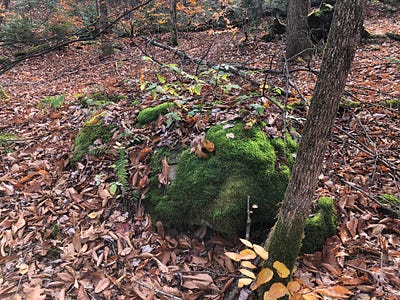
On an instinctual, intuitive level? It feels like a Special Place.
Below, across the old road, another possible Serpent Row crosses the brook. In that lower Stone Row in the Hollow, the large water end appears very much like a Serpent Head — and a single-stone-layer, smaller possible Serpent swims alongside, with its own, small Serpent Head Boulder.
Further along, surrounded stones and another single stone Serpent head are seen in this lower stone row as it runs northeast.
That’s a preliminary look at possible Stone Prayers and Serpent Rows found in a Hollow in Richmond near Camel’s Hump and the Winooski River in Vermont. Thank you, once again, to YouTube viewer Michelle S. for helping me find these with her great tip.
If you’d like to learn more about Indigenous Stonework in the Northeast, check out my articles here on Medium, or my Videos on YouTube — the newest, “What I Look For In The Stones”, tries to explain what distinguishes Indigenous stone rows from later European-inspired built stone walls in fifteen minutes: https://youtu.be/YYTA83pW0AA?si=OhSIfAZzHwcgBcCd.


